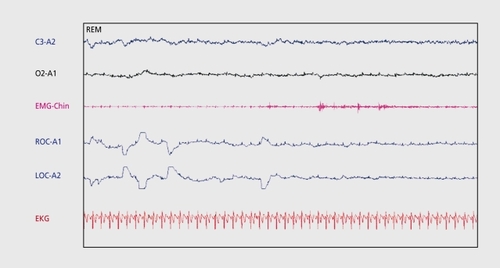Figures & data
Table I Classification of sleep disordersCitation4. NOS, not otherwise specified; REM, rapid eye movement.
Table II Multicomponent therapy instructions
Table III Chronotherapy instructions to advance sleep phase.Citation47
![Figure 1. Hypopnea in a patient with obstructive sleep apnea syndrome. Note the low amplitude signals seen in the nasal cannula and airflow channels with increasing effort demonstrated on the chest and abdominal (Abd) channels. The Pes (esophageal pressure [PES]) channel shows crescendo increases in esophageal pressure with reversal.](/cms/asset/72619a48-197f-4bc8-a53d-65dfcd8b12b3/tdcn_a_12130538_f0001_oc.jpg)
Table IV Clinical features of obstructive sleep apnea syndrome.
